We are very excited to have textile artist Emma Redmond as our fourth artist of Contemporary @ Heirloom. Through exploration and experimentation with multiple textile mediums, Emma produces highly distinctive works. From placing holes in her quilts to utilizing funky vintage fabrics, she has created a subset of textiles that are extremely fun and imaginative.
Scroll down to read the interview, learn about her process and enjoy photos of Emma’s studio.
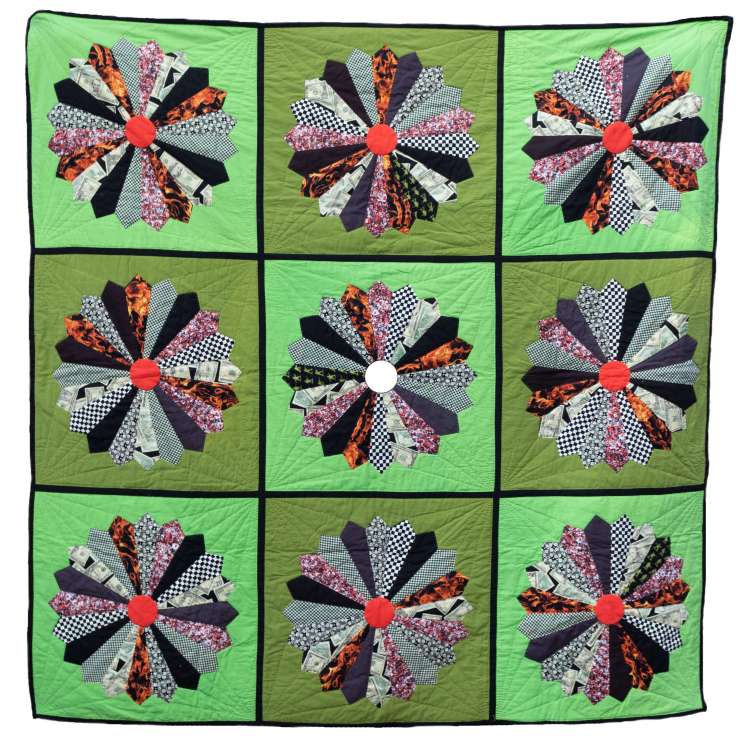
What first drew you to the world of textiles? What was the first medium you experimented with?
I don’t really remember, I think I’ve always used textiles and maybe just how I can manipulate them in a way that I didn’t necessarily feel I could in things like drawing. My great aunt was a quilter and knitter and I think having her, it was familiar enough. I don’t think I remember what drew it to me originally. I think probably learning hand sewing and some embroidery, but I also remember doing a lot with cutting out felt and fabric that later I would realize was some sort of quilt making but at the time it was more sort of collage to me. I think I started to sew when I was 10 and started to figure out a sewing machine, maybe a little later.
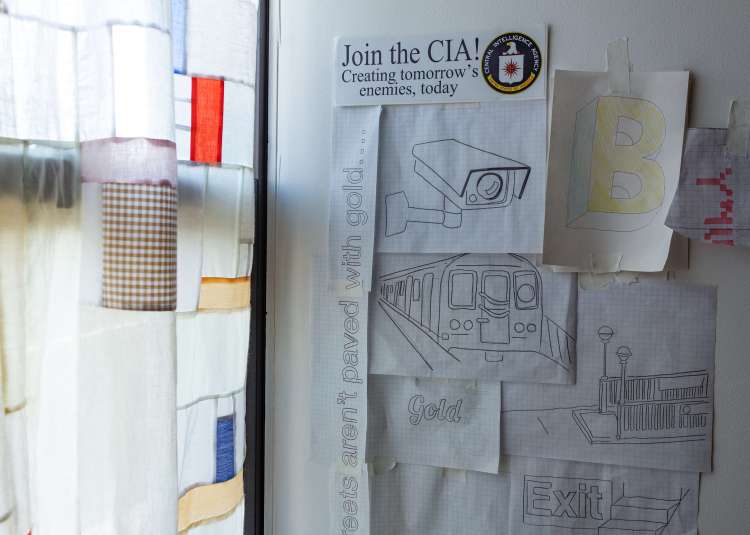
How did you go about learning about quilt making and tapestry weaving? What steps did you take to start working in these mediums?
Mostly trial and error and experimenting. I studied textiles at school for a little bit, but I mostly just learned quilt making from sewing and practicing. I also made a lot of garments in high school so I knew enough about sewing and construction that quilt making was an easier thing to experiment with. I definitely made some structurally unsound quilts in the beginning. How were they structurally unsound? I didn’t really know a lot of the things, I didn’t know the best ways of quilting, I didn’t know good ways of binding, I wasn’t even ironing my seams the right way. They were fine you could still use them. They aren’t my favorite now but they were the way I learned which was just piecing fabric together not based on quilt making in a pattern based and repeat based way. I wasn’t really focused on that part of it, I was just putting scraps of fabric together. Kind of more utilitarian quilts i would say. I have one that is now just sort of used if there is an animal at the house, I will put that one down. It has a lot of wacky stains but one that I dyed the fabric for when I was learning and practicing dying. Some cool dye work on it but also stains that have added more dyes to it and bleeding because the fabric was never set properly so I like how that one has changed with time.
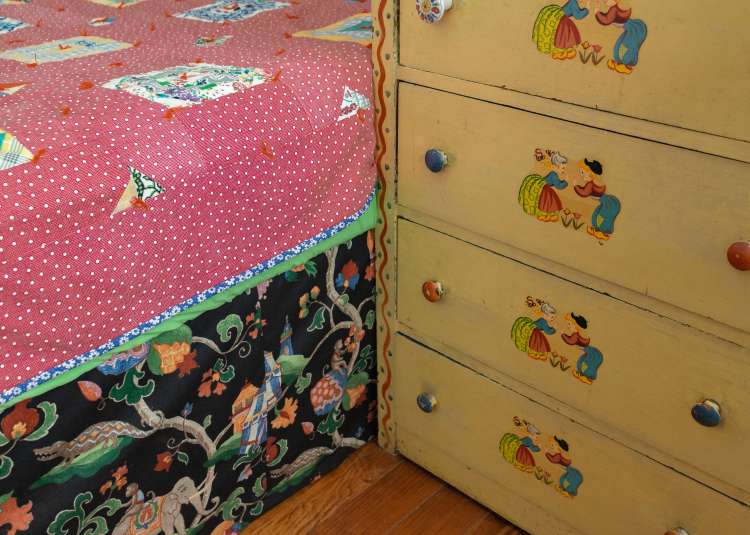
Do you have a preconceived idea for your pieces or do you let materials guide you?
It usually starts with a foggy idea, I don’t do sketches and I usually don’t know how it’s going to end up looking. I do create a lot of small sketches for weavings and have an area where I will put drawings up and ideas that I might want to put in, but I don’t ever have a fixed composition and it’s usually narrative based or more pictorial. I work a lot with images and kind of let them dictate what’s going to happen. In your quilts that have flowers and color, how does that dictate? I think I also let the material guide it, recently I have been doing a lot with vintage fabric and found fabric and not even necessarily quilting fabric. I don’t want to say I let it talk to me because that sounds really new agey and I don’t let it talk to me, but maybe I do. Maybe I let it talk to me a little bit.
How does hand dying your materials guide or direct the outcome of your pieces?
I don’t really do it anymore, I’m not opposed to it, but everytime I do I’m reminded of how much I dont like dyeing so.
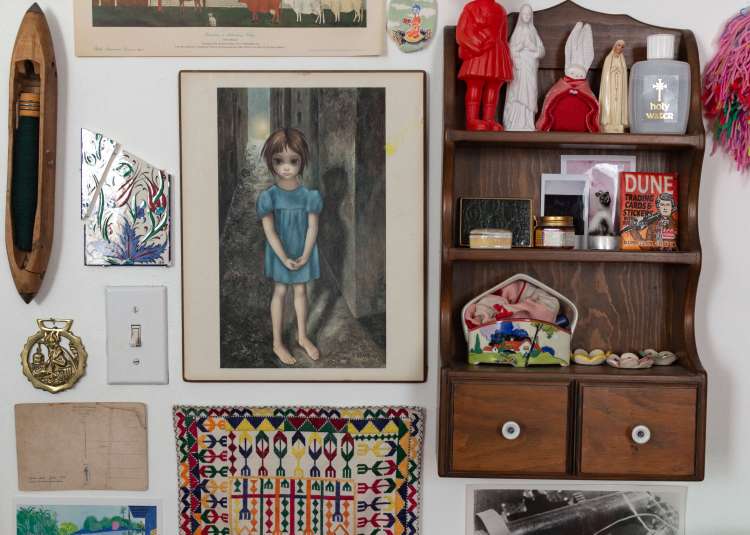
How do you think the work you are creating in quarantine will translate or transform your work afterwards?
I don’t know. I don’t know if my work has necessarily changed from quarantine. I think I just have more time to make it and that’s the benefit of it, but I think I’ve always been interested in the collapse of the world so quarantine exacerbated some of those themes. I don’t know if it’s affected my work as much.
How do the different mediums you work in intersect and why is it important to you to switch around?
I get bored working on one thing or I kind of lose interest in the source material and it’s usually not something I will stay bored with, but I have to move on for a little bit. I think it’s just for my sanity to move on, boredom happens quite a bit.
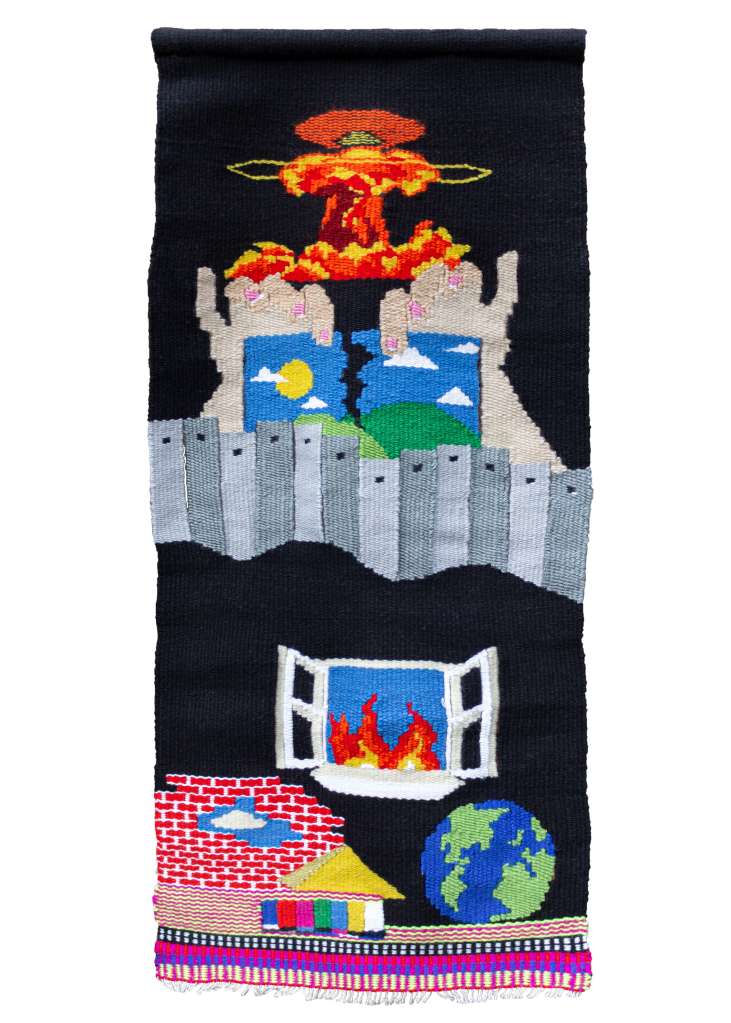
Where/what/who do you look to for inspiration? Has this changed over time or stayed constant?
Popular iconography, familiar iconography, symbolism, less in an esoteric way but more in a visual language way. I like work that you don’t have to necessarily be familiar with something to understand it or to understand some of the images. I like when you don’t understand them fully, I like the confusion that can come from visual language.

I really love how you use holes in your quilts, how did you get there?
I like that the idea of a hole can be perceived in so many ways. You can see a hole in the wall and it can either be to look into something or to restrict something. It can be a sign of openness and also a menacing sign as well. Walls and holes are something i’m very interested in. The holes too, you shouldn’t have a hole in a quilt, it’s kind of the worst thing if you have a hole in a quilt and I think that idea I thought was kind of funny. There’s also something kind of sexual about it too. There’s something funny and a little perverse about putting a hole in a quilt.
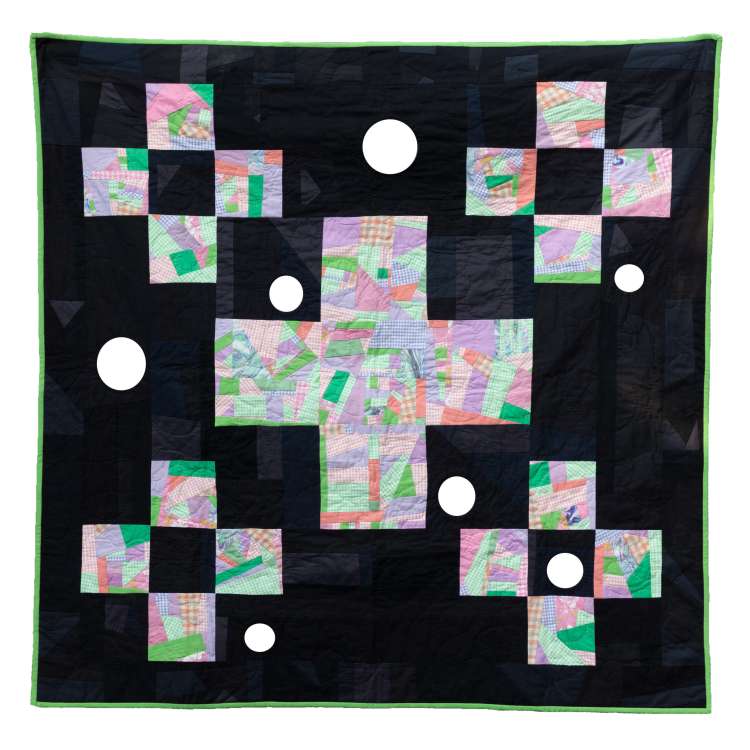
What specific textile artist or culture are you interested in at the moment?
19th and 20th century american folk art is a very big inspiration. Quilts, american quilt making, and right now early 20th century crazy quilts. Victorian crazy quilts i’m looking at a lot, i’ve been going crazy for crazy quilts.
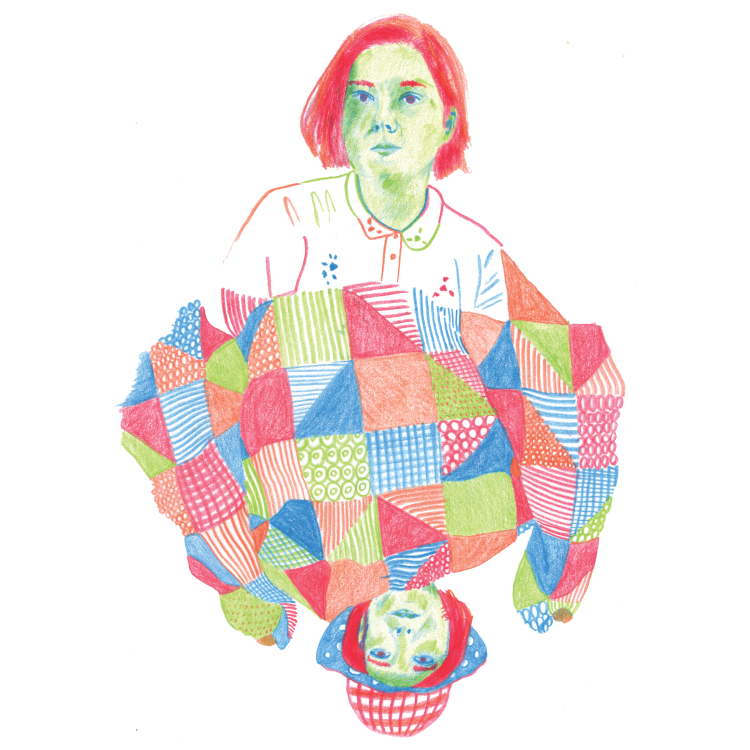
Thanks for being part of our Heirloom community and tuning into our fourth edition of Contemporary @ Heirloom.
– Zach, Lynn, Nathalie & Sam
*Illustration by Lynn Hunter

